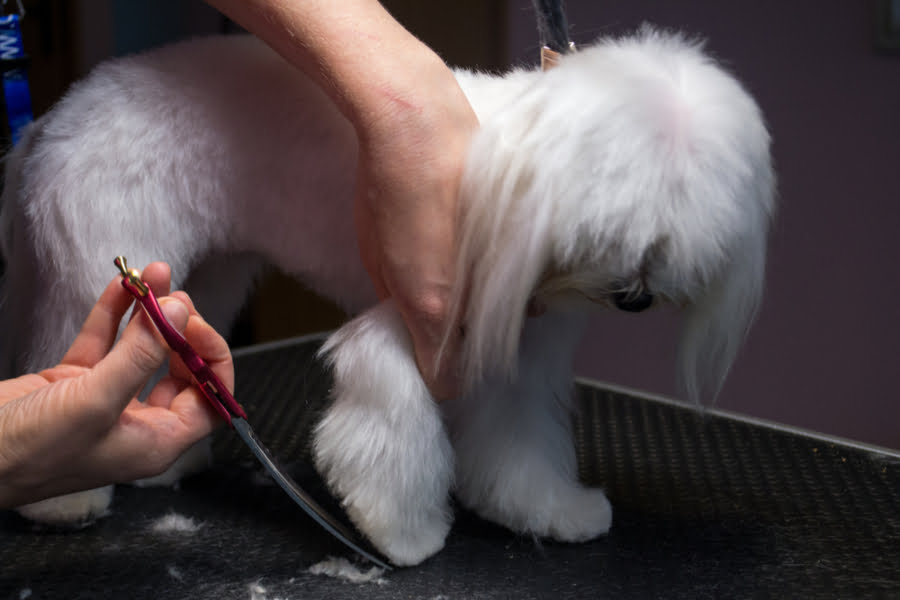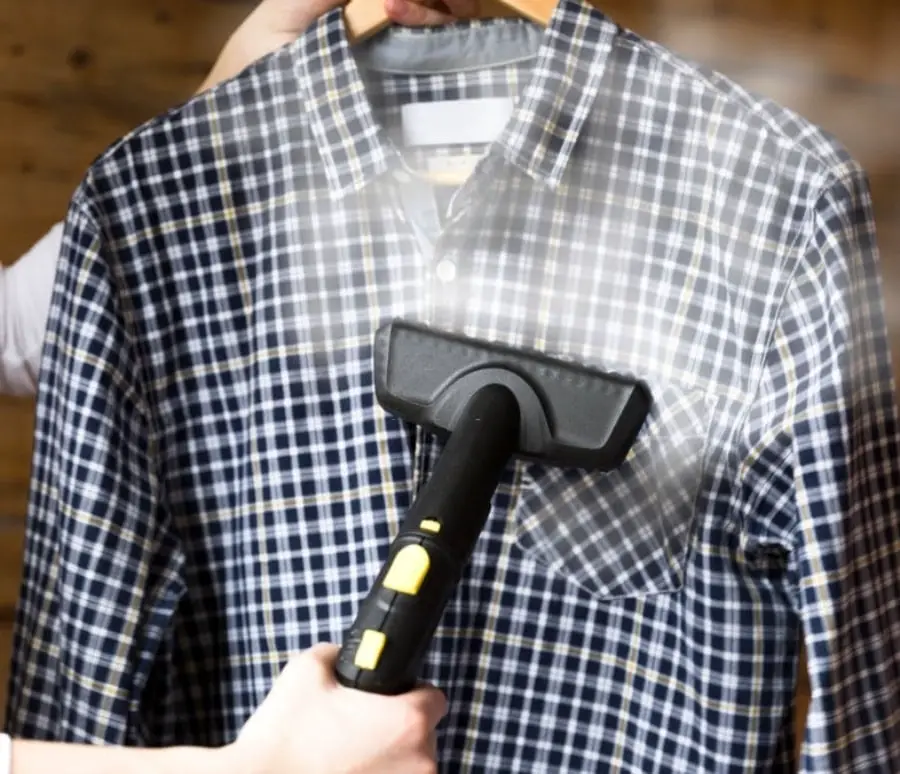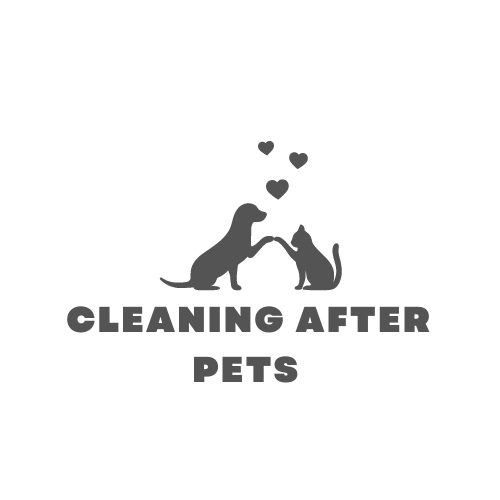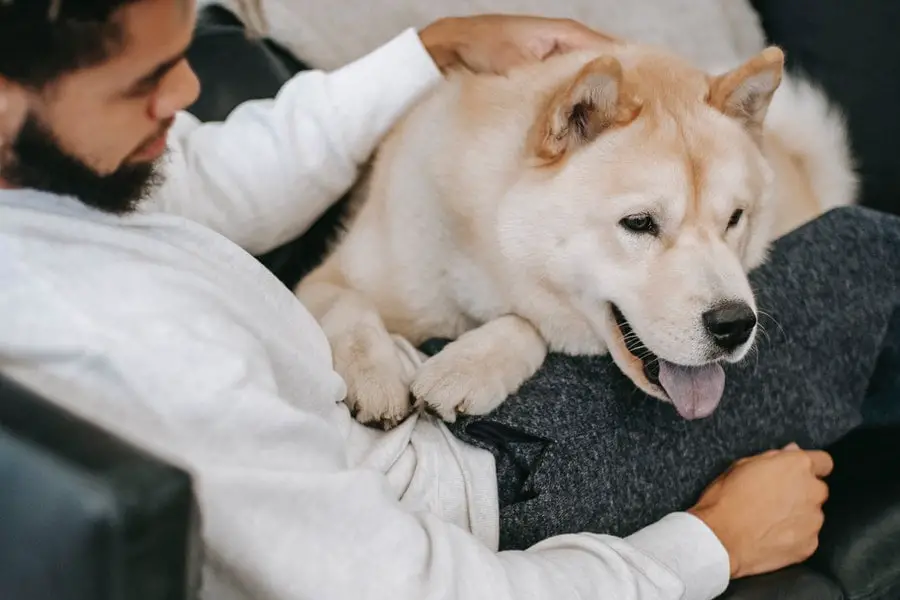Man’s best friend is a welcome addition to any family. They add so much to our families, from enduring companionship to unconditional loyalty and love all through their lives. In many regards, we cannot thank them enough for all the positives they add to our lives.
All things considered, we must acknowledge that they are a pain to clean after. All dogs are messy, some more than others. They are particularly notorious for leaving their fur behind everywhere. And if your dog loves to cuddle, you can rest assured that dog hair will cover your clothes.
Herein we delve into ways you can how to get dog hair out of clothes. We provide a series of systematic steps on how to get rid of dog hair on clothes, starting with the simple methods to the more technical ones.
Why Does Pet Hair Stick To Clothes?
While there are numerous ways dog hair sticks to clothes, the static buildup on your clothes is the primary mechanism for hair (fur) to stick to clothes. Electric energy is transmitted between the hair and the fabric when the two surfaces touch each other.
The electric energy gives the hair and the fabric negative and positive charges, attaching the hair to the material. This effect is prevalent in clothes made of synthetic fabric. Static electricity is more capable of holding onto lighter, finer, and curlier undercoat hair.
As such, releasing the static energy buildup between the fabric and dog can help separate the hair from the fabric.
Aside from static energy causing dog hair to stick to clothes, sharp, stubby and straight outer coat hair can embed into the fabric, especially for loosely woven fabrics. As such, you will find your dog’s outer layer will stick to natural materials such as cotton and wool, which tend to have loose weaving patterns.
How To Get Rid Of Dog Hair On Clothes By Grooming And Brushing Your Dog Regularly

Ideally, instead of asking yourself how to get dog hair out of clothes, you should think of ways of preventing the hair from getting on your clothes. This calls for an understanding of why and how dogs shed their hair. There are numerous reasons for dogs to shed hair.
For instance, research has shown there is seasonality to dogs shedding hair. For dog breeds that shed hair seasonally, you will notice an increased occurrence of shedding during fall and spring.
In the case of spring shedding, the dog is preparing for summer by shedding some of his or her hair to end up with a lighter coat. In the same light, fall shedding is occasioned by the dog preparing to lose the lighter hair, which is replaced by a heavier coat.
In some cases, shedding is occasioned by health conditions such as Alopecia, a condition where your dog cannot control hair loss. Finally, hair loss is occasioned as part of the natural cycle of hair growth.
Brushing your dog more often will reduce the amount of loose hair lurking on your dog’s coat. As you brush the courses through their fur, it will trap all the loose hair. In many regards, this is a preemptive solution as you remove the hair that might later cling to your clothes.
Grooming your dog offers the same solution. Regular grooming cuts short the long hair that might be delicate and easy to pluck from the coat. In this regard, regular grooming increases the hair’s sturdiness in the coat, cutting down the shedding.
Tips And Home Remedies To Remove Pet Hair From Clothes
Remove As Much Hair With Your Hands (Before Using A Lint Roller, Clothes Brush, A Washer, or Dryer)
Not all hair needs a comprehensive style of removal. So, get rid of as much hair as possible by picking or rubbing it off with your hands. You can also shake the clothing for more hair to fall off.
You will need to do this outdoors or when standing on a well-spread garbage bag. Remember, we need to keep the hair off the rugs as well.
How To Get Rid Of Dog Hair On Clothes Using Hand Tools
Use A Lint Rollers
Lint Rollers work by rolling the gluey surface on the fabric. The adhesive surface picks hair, dust, or lint from the clothes.
Hold the Lint Roller firmly by its handle, press, and make motions on the fabric using the tool’s rolling end.
You could consider a battery-operated lint remover if you want to enhance the hair removal process. However, lint rollers’ efficacy in removing deep-rooted hair, lint, or dust from fabric has been criticized before, and it may be time to use the next method.
Use A Clothes Brush
A quality soft-bristle fabric brush is ideal for removing surface-level and deep-rooted hair, lint, and dust off your fabric.
The aim is not to scrub but to make long and firm sweeping moves on the clothing when using the brush on fabric.
Depending on the fabric type, you can wet the brush and achieve better results, especially when dealing with deep-rooted hair or lint. Brush off the hair or lint from the fabric in one direction all the time.
Run the brush against the lie of the fabric. Use short and rapid strokes to swipe to brush particular areas like the collars and cuffs. All the while, however, you must apply gentle pressure to avoid damaging fiber.
You will appreciate a clothes brush more when dealing with woolen or cashmere. Woolen and cashmere easily wear out and lose color, or shape if you frequently wash the garments.
Brushing Delicate Clothing (e.g., Velvet)
Clothes brushes made of natural bristles like boar or horsehair are the best options to buy, especially for delicate fabric. Synthetic alternatives such as brushes made of a material like nylon may be too abrasive and damage fabric like velvet or delicate embroidery.
Use clothes brushes with a velvet surface (velvet-faced) to brush finely-woven velvet. The velvet-faced fabric brush removes hair or lint and is gentle on the clothing.
Brushing a Coat
Begin by untucking the flaps and emptying the pockets.
Open up the collar and lay the blazer on a surface with the front side-lying on the downside.
Fold the shoulders backward and put the sleeves of the blazer at the center.
Begin brushing the coat along the line of the blazer/coat. Brush in long strokes, running from top to bottom and from the side of the buttons heading inwards.
Also, brush the top and bottom of the sleeves.
Finally, please focus on the collars and other tricky areas and remember to do it with short and rapid brush strokes.
Brushing a Trouser
Begin by brushing the trouser’s lie from around the waist area and then move downwards.
Lay the trouser’s legs tidily one above the other, then brush off the outside, from top to bottom, in long sweeping actions.
Fold one leg over the other to expose the inside part of the other portion of the trouser and brush off.
Turn the trouser to uncover the other side of the trouser and brush off the outside, from top to bottom, in long sweeping actions.
Fold the leg to expose the inside of the other portion of the trouser and brush off.
Focus on the cuffs and areas you may have overlooked. Brush, in short, rapid strokes.
If you are considering buying a clothes brush, you can look at the All-Rounder brush, the Kent, or the Kent CC2. Kent CC2 is ideal for traveling.
A Clothes Steamer

With the proper Lint Remover attachment, a clothes steamer is an excellent solution to get rid of dog hair from clothes. The Steamer is also ideal on delicate fabric like wool or velvet.
To use a cloth steamer, start by filling the Steamer’s tank with water without up to the “Maximum Fill” mark and fasten the lint remover attachment.
Work near a stable surface for safety purposes, where you can place the tool when not steaming cloth.
Plugin the Steamer and let it heat up. Once it is ready, pick the Steamer by its handle, press the button to blow steam, and clear any rusty droplets that could have accumulated in the device.
The next step is to steam your clothes, which should be freely hanging by a rod or a hook. Ensure the cloth is hanging at an ideal height to avoid body strain if you are using a standing clothes steamer.
Steam cloth starting at the top while making a downward stroke. Also, note you will achieve better results when you momentarily stop to stretch the garment.
You will need to steam the cloth while lying horizontally on a supporting surface to get rid of hair or lint on the collar or cuffs of your garment.
Steaming Delicate Clothes
Steam lightly on delicate fabrics or those with light embroidery. Light steam is opposed to thick garments such as coats and jackets, where you might need to press the brush accessory/lint remover attachment against the fabric.
The Steamer’s warm moisture separates the hair trapped in the fabric by releasing static buildup. The steam makes it easier to remove hair or lint from the material. Additionally, steaming eliminates wrinkles on clothes.
A clothes steamer is expected to operate for 10 to 15 minutes on a full tank. Remember to clean the lint remover attachment regularly. You can learn more about this tool from the care instructions labeled on the Steamer.
Other Tools (Kitchen Sponge and Tape)
A kitchen sponge (that is no longer in use) and a tape as some of the home remedies remove pet hair from clothes.
When using the kitchen sponge, the idea is to wipe off pet hair by running the scrubbing side against the fabric. When using tape, the sticky side should firmly touch the cloth to lift hair, dust, or lint.
However, the tape is likely to leave marks on the garment, especially if you are using duct tape, which may also be too abrasive. An example of the ideal tape to use for this work is the simple Scotch Tape.
How To Remove Dog Hair from Clothes without Lint Roller, Fabric Brush, and Other Tools
You may have tried hair removal on the clothes using the previous methods and tools, but you are not satisfied with the results. Other steps you can take to remove pet fur may include:
Using the Dryer
Put the clothes in the dryer before washing the clothes and set it to a low (or no) heat (dry) cycle for ten minutes.
Remove the garment from the dryer and check if any hair is left. If any hair remains, run another dry cycle for another 5 or 10 minutes. Ensure you wipe off hair and dust from the lint trap before you run a second dry cycle for hair-free clothes after washing.
Finally, shake the clothes to any shake off remaining hair before washing. The goal is to have as little hair on the fabric as possible before washing it.
Using Fabric Softener
Fabric softeners work to release static pressure holding the hair to the fabric . A quality fabric softer will slacken the hair from the cloth.
Measure the required quantity of the fabric softer depending on the load to wash. Most fabric softeners have a measuring cup to help portion out the right amount.
Do not pour the fabric softener directly into the drum of the washing machine. Use the dispenser in the engine to run the fabric softener up to the fill line. The dispenser resembles a tall cylinder at the machine’s center or exists on the machine’s top as a small compartment. It enhances
Using Vinegar To How To Get Dog Hair Out Of Clothes
First, confirm if your machine can use vinegar. Measure about 100ml to 120ml of white vinegar and pour it into the dispenser of the washing machine.
Acetic acid is the active compound in vinegar that separates hair from fabric. Vinegar is also preferred because it is a green product. Additionally, you can replace vinegar with apple cider vinegar.
A word of caution, though, you should not use vinegar with clothes sensitive to acidic solutions. Being acidic, vinegar right destroys clothes such as chiffon and velvet.
Using Dryer Sheets
Place 1 or 2 sheets of the dryer sheets in the washer depending on the load of clothes. For fabric with more buildup of static-like flannel, use an additional dryer sheet. Dryer Sheets are microfiber made of synthetic material with super-thin fibers, coated with fatty acids, stearic acid, and other chemicals. When put in a dyer, the heat melts the stearic acid and coats on clothes, softening the fabric and reducing static buildup.
The microfiber in dry sheets is about 1/100th the diameter of human hair, with an extensive surface area to pick hair, dust, and lint. The microfiber size relative to the particle size of hair or dust makes dry sheets and polyesters, e.g., Nylon, Nomex, and Kevlar, effective cleaning products.
It is important to note that the use of dryer sheets on towels, socks, and workout wear has been criticized because stearic acid weakens the wicking capabilities. Workout clothes are supposed to take moisture away, dry up quickly and keep the body cool. The stearic acid coating locks sweat in the fabric and keeps the material wet.
If you’re removing hair from workout clothes, consider using crushed balls made of aluminum foil in place of a dry sheet. You will need about 3 or 4 square feet of aluminum foil crashed into a ball of 2 or 3 inches in diameter.
Using 3-6 Wool (Dryer) Balls
Before drying laundry, put the wool balls in the dryer together with the wet clothes.
Wool dryer balls are an eco-friendly alternative to dry sheets. Wool balls work like dry sheets to remove hair from laundry by releasing static buildup. They are not only bio-degradable but also can be reused. They lack a real scent because they are free of artificial additives. Wool dryer balls are about the size of a tennis ball and can be found in a big-box store or acquired from an online retailer.
Ensure you clean the lint trap midway during the drying process to prevent hair from sticking back to clothes if the lint trap gets clogged during the drying process.
Learn How to Neutralize Dog Urine On Your Lawn To Prevent Urine Patches
Conclusion
There are many ways in which you can get rid of dog fur stuck on your clothes. Any of the tips discussed above will work wonders and leave your clothes fur-free. If you have any tips, share them with us down in the comment section. we would love to hear from you about your experience in dealing with dog fur on your clothes.

